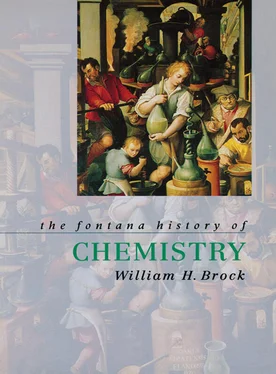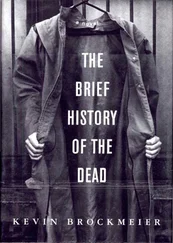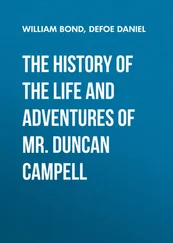TABLE 1.1 The ancient associations of metals and the heavens.
from them the names of the week (table 1.1), as well as beliefs that metals grew inside the earth, to conclude that myth and analogy played the equivalent role of chemical theory in these technologies. Moreover, it seems highly likely from later written records that metallurgists believed that, while metals grew normally at a slow pace within the earth, they could accelerate this process within the smithy, albeit an appropriate planetary god or goddess had to be propitiated by ritual purification for the rape of mother earth. It was this element of ritual, albeit in a Christianized form in the Latin west and a Taoist form in China, that was handed on to the science of alchemy.
For a science alchemy was. Theory controlled and exploited the empirical. Alchemy became a science when the masses of technical lore connected with dyeing and metallurgy became confronted by and amalgamated with Greek theories of matter and change. Greek philosophers with their strong sense of rationality and logic contributed a theory of matter that was able to order, classify and explain technological practice. The pre-Socratic philosophers of the sixth century BC had conjectured that the everyday substances of this material world were generated from some one primary matter. Both Plato ( c 427– c 347 BC) and Aristotle (384–322 BC), teaching in the fourth century BC, had also written of this prime matter as a featureless, quality-less stuff, rather like potter’s clay, onto which the various qualities and properties of hotness, coldness, dryness and moistness could be impressed to form the four elements that Empedocles ( d. c. 430 BC) had postulated in the fifth century BC. This quartet of elementary substances, in their turn, mixed together in various proportions to generate perceptible substances. Conversely, material substances could, at least in principle and often in practice, be analysed into these four components:
Although Aristotle seems not to have articulated a theory of cohesion, we may assume that the four elements were ‘bound together’ by the moist quality. Expressed in rectangular diagrammatic form, which became the basis for later geometrical talismans and symbols, each adjacent element can be seen to possess a common quality; hence all four of the elements are, in principle, interconvertible. Thus, by changing the form or forms (transformation) of bodies, Nature transmutes the underlying basic, or primary, matter into different substances. Despite pertinent criticisms by Theophrastus (371–286 BC), Aristotle’s pupil and successor at the Lyceum, that fire was different from other elements in being able to generate itself and in needing other matter to sustain it, the theory of the four elements was to remain the fundamental basis of theoretical chemistry until the eighteenth century.
For Aristotle there was a fundamental distinction between the physics of the heavens, which were eternal, perfect, unchanging and endowed with natural circular motion, and the sublunar sphere of the earth, which was subject to change and decay and where movement was either upwards or downwards from the centre of the universe. This sublunar region was composed from Empedocles’ four elements. Aristotle had rejected the atomic theory introduced in the fifth century BC by Democritus. The claim that the apparent differences between substances arose from differences in the shapes and sizes of uncuttable, homogeneous particles, while ingenious, seemed to Aristotle pure invention, whereas the four elements lay close to human sensory experience of solids and liquids and of wind and fire, or of hot and cold, wet and dry objects. How could atomism account for the wide variety of shapes and forms found in minerals in the absence of a formal cause? Moreover, to Aristotle, the postulation of a void meant that there was no explanation for motion, and without motion there could be no change. Atomism also failed to distinguish between physical and mathematical division – a problem that was overcome after Aristotle’s death by Epicurus (341–270 BC), who allowed that, although atoms were the unsplittable physical minima of matter, because an atom had definite size, it could be said to contain mathematically indivisible parts. Epicurus also explained the compounding of atoms together as they fell with equal speeds through the void as due to sudden ‘swerves’ or deviations. These unpredictable swerves are a reminder that atomism, as popularized in Epicurean philosophy, had more to do with the establishment of a moral and ethical philosophy than as an interpretation of the physics and chemistry of change. Swerving atoms allowed for human free will. Atomism for the Epicureans, as well as for its great poetic expositor, the Roman Lucretius in De rerum natura ( c. 55 BC), was a way of ensuring human happiness by the eradication of anxieties and fears engendered by religions, superstitions and ignorance. Ironically, in the sixteenth century, atomism began to be used as a way of eliminating the superstitions and ignorance of Aristotelianism.
The other great post-Aristotelian system of philosophy, Stoicism, because it adopted and adapted considerable parts of Aristotelianism, was more influential. Founded by the Athenian, Zeno (342–270 BC), during the fourth century BC and refined and developed up to the time of Seneca in the first century AD, Stoicism retained Aristotle’s plenistic physics and argued for the indefinite divisibility of matter. Stoics laid stress on the analogy between macrocosm and microcosm, the heavens and the earth, and distinguished between inert matter and a more active form, the latter being called the pneuma , or vital spirit. Pneuma pervaded the whole cosmos and brought about generation as well as decay. Ordinary substances, as Empedocles and Aristotle had taught, were composed from the four elements, albeit hot and dry, fire and air were more active than passive wet and cold, water and earth. From this it was but a short step to interpreting air and fire as forms of pneuma, and pneuma as the glue or force that bound passive earth and water into cohesive substances. The concept was to have a profound effect on the interpretation of distillation.
Chemical compounds (an anachronism, of course) were mixtures of these four elements in varying proportions – albeit Aristotle’s and the Stoics’ views were rather more sophisticated than this bald statement suggests. The central theorem of alchemy, transmutation, could be seen in one of two ways, either as what we would call chemical change caused by the different proportions of elements and their rearrangement, or as a real transmutation in which the qualities of the elements are transformed. Alchemy allowed far more ‘transmutations’ than later chemistry was to allow, for it permitted the transmutation of lead or other common metals into gold or some other precious metal. A real transmutation of lead and gold was to be achieved by stripping lead of its qualities and replanting the basic matter that was left with the qualities and attributes of gold. Since lead was dense, soft and grey, while gold was dense, soft and yellow, only a change of colour seemed significant. However, although alchemy is usually taken to be the science of restricted metallic transmutations, it is worth emphasizing that it was really concerned with all chemical changes. In that very general sense, alchemy was the basis of chemistry.
One of the most important geographical areas for the creation of alchemy was Egypt during the Hellenistic period from about 300 BC to the first century AD. Egypt was then a melting pot for Greek philosophy, oriental and Christian religions, astrology, magic, Hermeticism and Gnosticism, as well as trade and technology. Hermeticism, which took its title from Hermes , the Greek form of the Egyptian deity, Thoth, the father of all book learning, was a blend of Egyptian religion, Babylonian astrology, Platonism and Stoicism. Its vast literature, the Hermetic books, supposedly written by Hermes Trismegistus, was probably compiled in Egypt during the second century BC. Gnosticism, on the other hand, was an ancient Babylonian religious movement, which stressed the dualism between light and darkness, good and evil. Gnosis was knowledge obtained only through inner illumination, and not through reason or faith. Humankind was assured of redemption only from this inner enlightenment. Gnosticism both competed with early Christianity and influenced the writing of the Gospels. As its texts show, however, Gnosticism was as much influenced by contemporary alchemy as it influenced alchemical language. For example, in the Gnostic creation story, chemical expressions referring to sublimation and distillation are found, as in the phrase ‘the light and the heavy, those which rise to the top and those which sink to the bottom’. The most important of the Gnostics, Theodotos, who lived in the second century AD, used metaphors of refining, filtering, purifying and mixing, which some historians think he may have drawn from the alchemical school of Mary the Jewess. When Gnostic language is met in alchemical texts of the period, such as the Dialogue of Kleopatra and the Philosophers , however, it is difficult to know whether the author is referring to the death and revivification of metals or to the death and regeneration of the human soul. Exoteric alchemy had become inextricably bound with esoteric alchemy.
Читать дальше












